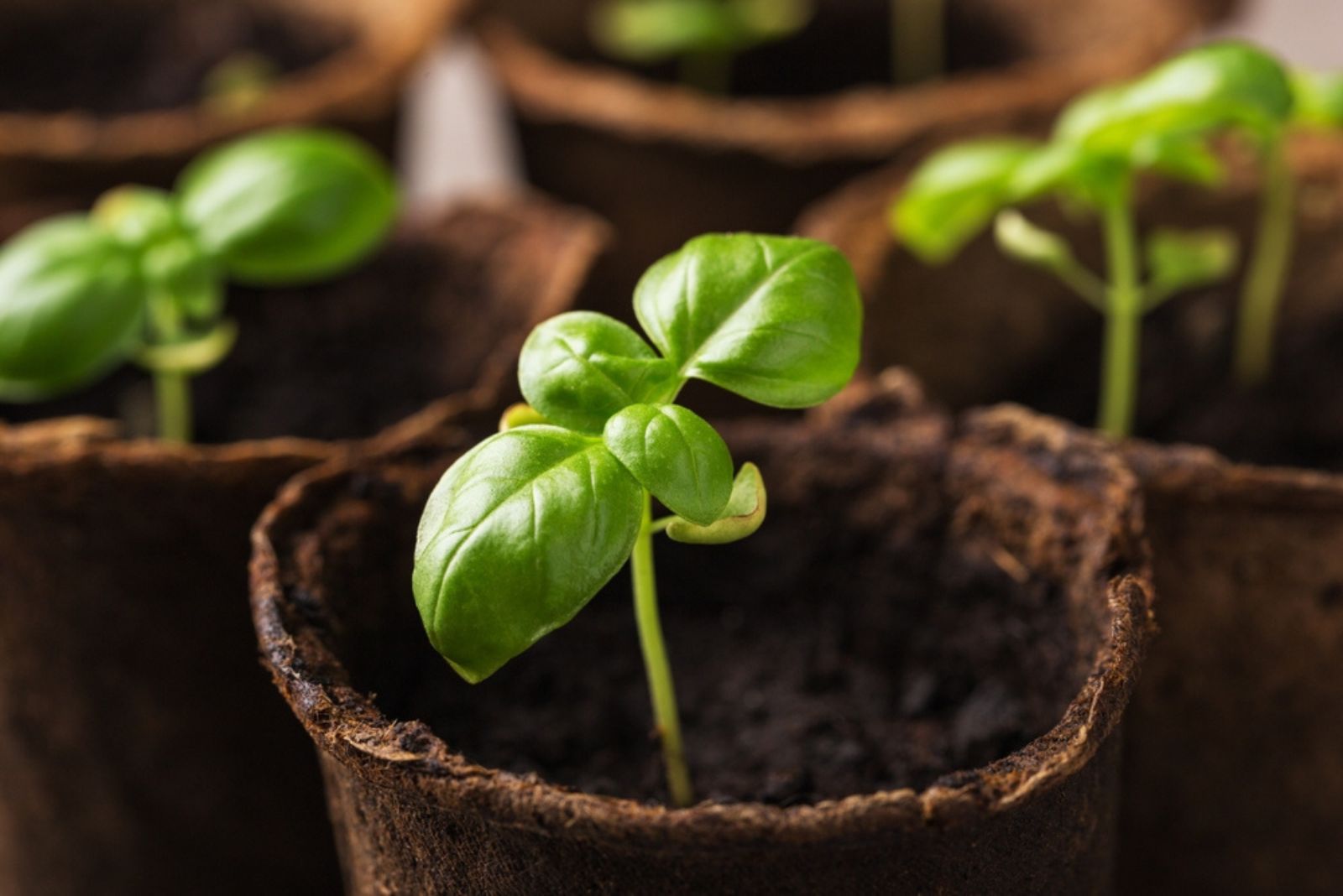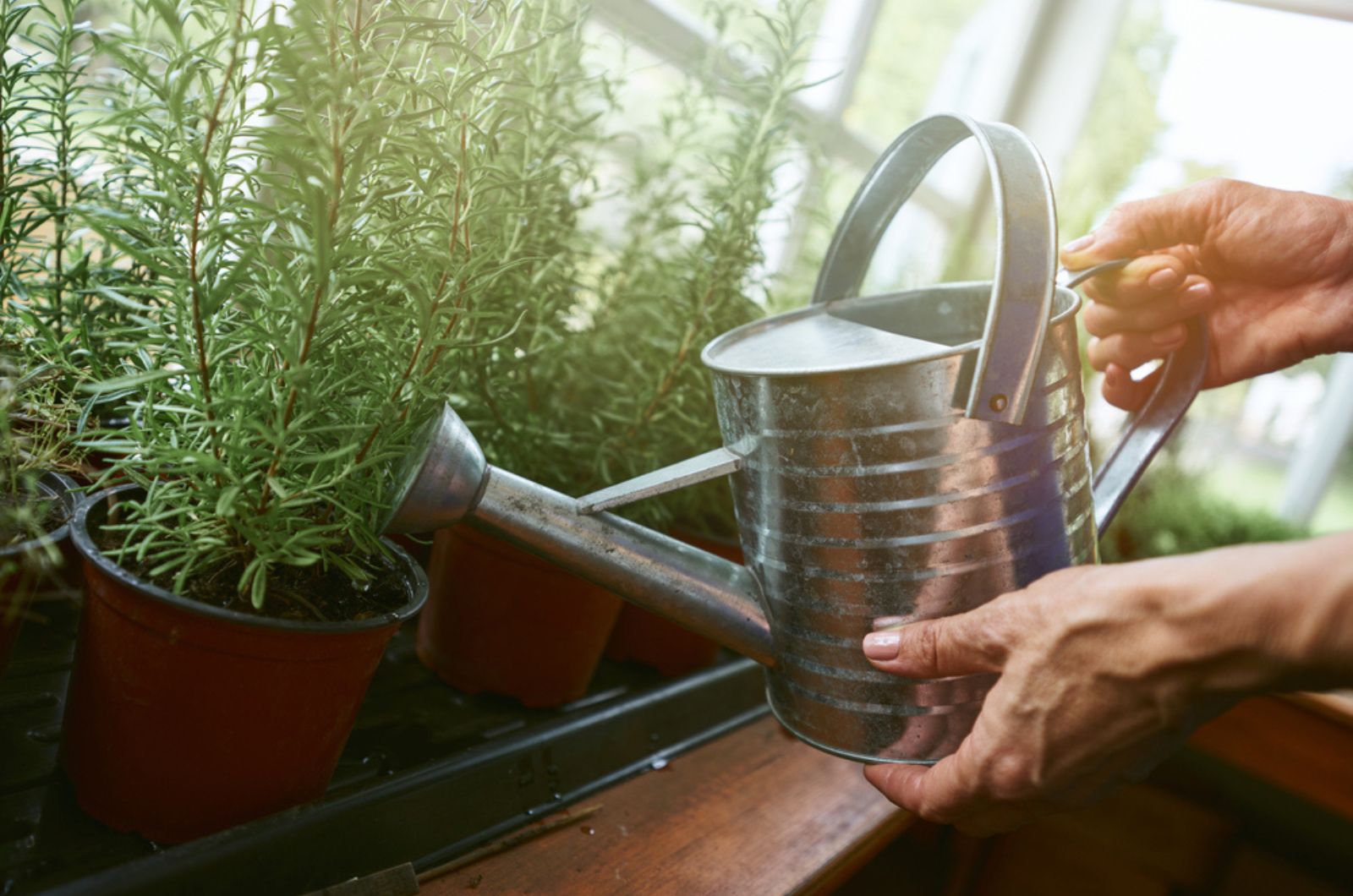When I look back on my younger days, I remember that my mom never bought herbs in stores, and certainly never the dried ones. She always grew her own, all year long.
And now that I’m older and have a garden of my own, I went to her for a couple of tips and tricks. I know that she grows summer herbs year round and I asked her her secret.
The things she said made keeping potted herbs alive indoors all winter a breeze and here are some of the things that definitely work.
Let’s get started!
#1 Pick The Right Herbs
There are many cold-hardy herbs to grow in winter, such as rosemary, sage, thyme, and even parsley, but they’re not suitable for an indoor herb garden.
But if you want to grow herbs indoors, you should focus on more tender varieties, such as cilantro, dill, and basil.
And if you’re buying potted herbs in stores instead of growing your own, you should choose those with large, bushy foliage and not the biggest plants available.
Find those with strong stems in addition to flashy foliage, but stay away from herbs with brown or diseased leaves.
Another tip my mom mentioned was to avoid getting plants with tangled stems since they generally don’t do well and you really don’t want to create more work for yourself.
Also, don’t go for herbs that are already flowering or preparing to do so. They will quickly go to seed and you won’t have much time for the leaf harvest.
#2 Thin The Seedlings
When buying potted herbs or sowing your own, make sure to thin the seedlings. Many growers tend to overseed and once all the seeds sprout, they cram the pot.
It does make the planters look fuller and more desirable, but it actually makes your herbs compete for moisture and nutrients. In this setting, no seedling can thrive, which is why you should thin them out.
Get some pots online or in your local garden center and prepare for dividing.
You’ll have to take your herb out of the pot and separate the roots, trying your best not to break them.
Once you’re done with this, you don’t have to throw your seedlings away. You can simply repot them and here’s how!
Pro tip: If you have a lot of seedlings, you can always use the leaves and compost the stems.
#3 Repot Them
Growing herbs in pots is relatively easy, but you have to ensure that you have no more than 1-2 seedlings per planter.
Use high quality potting soil and place your seedlings in it. Fill the containers with the growing medium and water your new herbs. Just make sure they’re not drowning in water.
Once you complete this, give your plants some time. They will go through transplant shock, so try to make them as comfortable as possible.
That means keeping them at mild temperatures (60-75°F) and away from direct sunlight. Once they’ve had time to recover and you notice some new growth, you can move them to a brighter location, such as a windowsill in your kitchen.
#4 Fertilize And Water Your Herbs Regularly
There are many mistakes you should avoid when growing herbs indoors, and one of them is overwatering.
This is more common than you’d think, especially when novice gardeners notice their herbs have started to droop and wilt a bit. They immediately start drowning their herbs in water, which is harmful.
The key is to irrigate your potted herbs until you notice water has started to drain through the drainage holes. Let it drain completely and take your plant to its usual location.
A cue that can tell you when exactly you should water your herbs is the soil. Once the top 1-2 inches of it are dry, you can go ahead and give your basil or cilantro something to drink.
Or you can try bottom watering. Pour some water in the tray and allow your plant and soil to absorb through the drainage holes. You can keep adding more until the entire pot is saturated.
And finally, if you want your indoor herbs to thrive and regularly produce new leaves, you can give them some plant food. Just take some worm castings or fish and seaweed fertilizer and apply them according to the instructions on the package.
#5 Use Them
One of the mistakes I myself have made, and my mother warned me about, was not harvesting my herbs the right way. Sure, you can take just a couple of leaves whenever you need, but if you really want your indoor herbs to thrive, you should chop them down.
You can harvest your cilantro without killing it by doing it on a colder day. Of course, you should never prune the entire plant, but taking a third of it once it matures is completely safe.
Your herbs will come out stronger and bushier and will last a lot longer. Obviously, herbs like cilantro and dill won’t live forever and will bolt eventually, but they’re not meant to be perennials anyway.
And once you notice they are starting to flower and go to seed, you can just pop to the store and get a new plant.






